From Ancient Delicacy to Modern Treat
In the annals of culinary history, fruitcake stands out not merely as a confection but as a symbol of cultural evolution. Its story stretches back through the ages, weaving a narrative of ancient civilizations and their unique takes on this timeless treat. We start our journey at the earliest believed civilizations known for incorporating dried fruits and nuts into dense, long-lasting cakes, continuing through early modern history, and finishing in the present day.
Fruitcake in Ancient Mesopotamia
(c. 3000 BCE – 539 BCE)
In the fertile lands of ancient Mesopotamia, where the mighty Tigris and Euphrates rivers met, the Sumerians were the first to experiment with sweetened cakes. Around 3000 BCE, these early bakers discovered the art of combining dates, figs, and nuts into dense, chewy cakes. These were no ordinary treats; they were crafted as offerings to the gods, meant to please deities who controlled the rivers, the rains, and the harvests. The tradition continued through the rise of the Babylonians, who, by 1894 BCE, had perfected these desserts into a staple of religious rituals. They believed that the richness of the fruits and the sweetness of the batter could bring blessings to their communities, ensuring prosperity and protection from misfortune. These fruitcakes were not just food—they were a bridge between the earthly and the divine, enjoyed during celebrations that marked the seasons and honored the gods.
Fruitcake in Ancient Egypt
(c. 3000 BCE – 30 BCE)
In the heart of the Old Kingdom, Egyptians were creating their own version of what we now call fruitcake. Made with honey, figs, and nuts, these cakes were as much a spiritual offering as they were a culinary delight. They believed these ingredients, harvested from the fertile Nile, were gifts from the gods. During grand feasts and important religious ceremonies, these cakes were offered to deities as symbols of fertility, renewal, and abundance. The tradition persisted through the Middle and New Kingdoms, with each era adding its own twist to the recipe. Even as Egypt fell to Roman rule around 30 BCE, the custom of making these sacred cakes remained a cherished part of their culture, a testament to their enduring spiritual significance.
Fruitcake in Ancient Greece: Plakous
(c. 800 BCE – 600 CE)
In the bustling city-states of ancient Greece, around 800 BCE, the tradition of plakous was born. These sweet cakes, made from wheat, barley, honey, and a variety of dried fruits like figs and raisins, were much more than a dessert. They were integral to celebrations, from weddings to religious festivals. The Greeks believed that the combination of fruits and honey symbolized prosperity and happiness, making these cakes perfect for occasions that marked new beginnings. The tradition of plakous continued through the Classical and Hellenistic periods, and even into the Byzantine era. These cakes were not only a treat for the living but were also offered to the gods, ensuring their favor in both life and death.
Fruitcake in Ancient Rome: Satura
(c. 753 BCE – 476 CE)
As the Roman Republic flourished around 753 BCE, the citizens of Rome developed a taste for a cake known as satura. This was no ordinary dessert; it was a rich, dense cake made with a blend of nuts, raisins, and preserved fruits soaked in wine or honey. Satura was a favorite during the festival of Saturnalia, where Romans celebrated the end of the agricultural year with feasting and merriment. But the cake wasn’t reserved only for Saturnalia. It found its way into weddings, religious ceremonies, and even as gifts among friends. The Romans believed that these cakes, bursting with fruits and nuts, were symbols of good luck and abundance. As the Roman Empire expanded, so did the popularity of satura, which became a staple in celebrations across the empire. Even as Rome fell in 476 CE, the legacy of satura lived on, influencing the evolution of fruitcake for centuries to come.
Fruitcake in Ancient China
(c. 1600 BCE – 220 CE)
In the bustling courts of ancient China, during the Shang Dynasty around 1600 BCE, sweet cakes made with dried fruits and nuts began to take shape. These early versions of fruitcake were enjoyed during the most important celebrations, such as the Chinese New Year and religious ceremonies. The Shang people believed that the combination of sweet and rich ingredients symbolized wealth, longevity, and happiness—ideals that were central to their culture. As dynasties rose and fell, the tradition of making these cakes persisted, evolving through the Zhou and Han Dynasties. By the time of the Han Dynasty (206 BCE – 220 CE), these cakes had become a beloved part of Chinese festivities, enjoyed by emperors and commoners alike. Their enduring popularity speaks to the deep cultural significance of these ingredients, which were seen as more than just food—they were a way to ensure prosperity and celebrate life’s most important moments.
Fruitcake in Medieval Europe: English Plum Cake
(c. 5th – 15th Century)
As Europe emerged from the chaos of the early Middle Ages, fruitcake began to take on new forms, particularly in England. By the 11th century, the Crusades had opened up trade routes to the East, bringing spices like cinnamon, nutmeg, and cloves, as well as a plethora of dried fruits into Europe. These ingredients were rare and expensive, making their inclusion in cakes a symbol of wealth and status.
The English “plum cake,” which became popular in the 14th century, was one such fruitcake. Despite its name, "plum" referred to any dried fruit, and these cakes often included raisins and currants mixed into a dense batter made from flour, eggs, and butter. Plum cakes were traditionally baked for special occasions such as Christmas and weddings, and their richness was a reflection of the prosperity of the household. These cakes were often soaked in alcohol like ale or wine, which helped preserve them for long periods.
Plum cakes persisted throughout the medieval period and into the Renaissance, maintaining their status as a celebratory food. They were often made weeks or even months in advance, with the flavors deepening as the cakes aged, becoming richer and more complex over time.
Fruitcake in Renaissance Europe: Panforte & Stollen
(c. 14th – 17th Century)
During the Renaissance, the fruitcake tradition flourished, particularly in Italy and Germany. In Italy, the panforte, a dense, chewy fruitcake, was already being made as early as the 13th century, but it gained widespread popularity during the Renaissance. Panforte, meaning "strong bread," was made with a mixture of honey, nuts, such as almonds and hazelnuts, and a variety of spices like black pepper, cinnamon, and cloves. Dried fruits such as figs, dates, and raisins were also included. This cake was not only a festive treat but also a valuable gift often exchanged during the Christmas season. Its long shelf life made it an ideal food for the wealthy merchant class, who appreciated its rich flavors and durability.
In Germany, the stollen emerged as a popular holiday fruitcake during the Renaissance. Originally a simple bread made during Lent, stollen evolved into a richer cake by the 15th century. The addition of ingredients like dried fruits, nuts, marzipan, icing sugar, and butter transformed stollen into a festive cake.
However, in 1450, the use of butter during Advent was banned by the Catholic Church. Viewed as a sinful fat, the church believed meat and dairy could encourage lustful feelings and therefore should not be consumed during days of holy fasting. While Catholics located in Southern Europe near Rome didn’t eat much butter, dairy-farming communities in France and Germany were hugely impacted. Relegated to using oil in their baking, bakers produced much less palatable flavorless brick cakes as a result. However, the church was not rigid on this rule. For a fee of six Livres Tournois, churchgoers were allowed to consume butter, meat, and dairy during forbidden times. Most French Catholics paid this fee, raising in total 24,750 Livres Tournois, enough money from butter taxes alone to build an additional tower onto the Rouen Cathedral. This tower, fondly known as the Tour de Beurre or “Butter Tower,” was built in the Gothic style and was completed in 1506; it houses the largest bells in France.
In 1450, displeased with the flavorless cakes and frustrated by the butter ban, Elector Ernst of Saxony and his brother Albrecht sent a letter to Pope Nikolaus V requesting the ability to use butter without paying a fine. For over forty years, four subsequent Popes denied their requests. Finally, in 1491, Pope Innocent VIII issued the "Butter Letter" which unrestricted the use of butter during Lent. This allowed Stollen to once again become a beloved Christmas treat. Stollen persisted throughout the centuries, maintaining its place as a central part of German Christmas celebrations, with each region adding its unique touches, such as the use of candied citrus peel or the incorporation of rum-soaked raisins.
Fruitcake in Early Modern Period: The English Great Cake
(c. 18th Century)
In the 18th century, fruitcake became increasingly elaborate, particularly in England, where the "Great Cake" emerged as a symbol of festivity and abundance. These cakes were enormous, often weighing several pounds and containing a vast array of ingredients. The English Great Cake typically included a mixture of dried fruits like raisins, currants, and candied citrus peels, combined with spices such as nutmeg, cinnamon, and mace. The batter was rich, made with flour, butter, eggs, and sugar, and the cake was often soaked in alcohol like brandy or rum to enhance its flavor and preservation.
These cakes were made for major celebrations, particularly Christmas and weddings. The tradition of aging fruitcake continued, with cakes often made weeks or even months before the event, allowing the flavors to mature. The practice of feeding the cake with additional alcohol during this aging process was common, ensuring that the cake remained moist and flavorful. The Great Cake persisted throughout the 18th and 19th centuries, where its association with Christmas grew particularly strong.
Fruitcake in Victorian England: Christmas Cake
(c. 19th Century)
The Victorian era marked a golden age for fruitcake, particularly in England, where it became an essential part of Christmas celebrations. The Victorian Christmas cake, a direct descendant of the Great Cake, was a rich, dense fruitcake filled with dried fruits, nuts, and spices. Candied fruits, particularly citrus peel, and cherries, were also commonly included. The cake was typically covered with a layer of marzipan and then iced with royal icing, often decorated with elaborate designs.
This cake was not only a festive treat but also a symbol of the Victorian obsession with opulence and tradition. The practice of giving fruitcakes as gifts during the holiday season became popular, and it was customary for families to save a portion of their Christmas cake to be eaten on special occasions throughout the year. The association between fruitcake and Christmas was further cemented by the introduction of Christmas cards and the growing commercialization of the holiday.
In the United States, fruitcake also became popular during the 19th century, with American bakers adapting traditional European recipes to include local ingredients like pecans and cherries. Southern fruitcake, in particular, became known for its use of bourbon or rum, reflecting the region's culinary traditions.
The Commercialization & Global Spread of Fruitcake
(c. 20th Century)
The 20th century saw the commercialization of fruitcake, particularly in the United States, where companies like our own Collin Street Bakery began making large quantities of fruitcakes for nationwide distribution. It was also around this time fruitcake became synonymous with Christmas, with many families ordering fruitcakes from their favorite bakeries as part of their holiday traditions. The long shelf life of fruitcake made it an ideal gift, and it was not uncommon for fruitcakes to be passed around between friends and family members during the holiday season.
However, by the mid-20th century, fruitcake began to suffer from a decline in popularity, particularly in the United States. The dense, heavy texture and the use of artificially colored candied fruits led to the perception of fruitcake as an outdated and undesirable gift. Despite this, fruitcake remained a beloved tradition in many households, particularly in the southern United States, where artisanal fruitcake bakers continued to produce high-quality cakes using traditional methods.
The Artisanal Fruitcake Renaissance
(c. 21st Century)
In the 21st century, fruitcake has experienced a resurgence in popularity, driven by the artisanal food movement and a renewed interest in traditional, handcrafted foods. Modern bakers have reimagined fruitcake, focusing on quality ingredients and traditional preparation methods. In England, fruitcake remains a central part of Christmas and wedding traditions, with modern versions of the cake often featuring marzipan, fondant, and intricate decorations. The tradition of aging fruitcake continues, with many cakes made months in advance to allow the flavors to mature.
Read our blog to discover How to Mature a Fruitcake Quickly
In the United States, the artisanal fruitcake movement has gained momentum, with bakers across the country creating unique variations of the classic cake. These modern fruitcakes often incorporate local ingredients, such as cranberries from New England or pecans from the South, giving them a distinct regional character. The use of organic fruits, nuts, and premium spirits has helped to restore fruitcake’s reputation as a gourmet treat, far removed from the mass-produced versions of the mid-20th century.
Today, fruitcake is celebrated as a symbol of heritage and craftsmanship, enjoyed not only during the holiday season, but throughout the year. Whether made using traditional recipes or reimagined with modern twists, fruitcake continues to connect us to centuries of culinary history and the joyous celebrations of the past.
Fruitcake Around the World
As fruitcake spread globally, it adapted to different cultures and tastes. In Japan, Japanese Fruitcake emerged as a lighter, airy version of fruitcake filled with candied fruits. Similarly, in France, the Bûche de Noël, while not a traditional fruitcake, incorporates some elements of fruitcake into its festive, log-shaped design.
In the Caribbean, fruitcake takes on a rich and spicy character, often soaked in rum for months before serving. This variation, known as Caribbean fruitcake or Jamaican Black Cake, is a staple at weddings and Christmas celebrations, reflecting the island's diverse culinary influences.
National Fruitcake Day
National Fruitcake Day has grown to become a popular observance every December 27 for fruitcake lovers across the United States, despite no official act of Congress establishing it. This grassroots celebration of all things fruitcake is an opportunity for families and friends to gather to bake and share recipes that differ from region to region and even participate in fun games and contests like fruit cake tosses.
Despite its rich history, fruitcake often suffers from a negative reputation. Many myths surround this historic dessert, centered on its texture, taste, and perceived longevity. Some people believe fruitcakes are inedible or too dense, but these misconceptions overlook the cake's versatility and deliciousness.
Fruitcake recipes are passed down through generations and have become a tradition for holiday celebrations and weddings. They’re a treat and gift associated with good fortune, wealth, and abundance. With the increasing popularity of artisan fruitcake bakeries and the use of natural, local ingredients, fruitcakes are shaking off old prejudices and enjoying a renaissance.
Discover the truth about fruitcake! Dive into our blog Fruitcake Myths Debunked to demystify common fruitcake myths and uncover why Collin Street Bakery’s DeLuxe® Fruitcake is a moist, flavorful, and year-round gourmet treat. Learn about its ingredients, unique taste, and convenience.
Try our Fruitcake Today!
Experience the delight of Collin Street Bakery’s DeLuxe® Fruitcake for yourself. Explore our wide selection of fruitcake sizes and styles. With sliced and unsliced options, snackable cake bites, and even a gluten-free fruitcake option, there’s a style of fruitcake for everyone to enjoy.

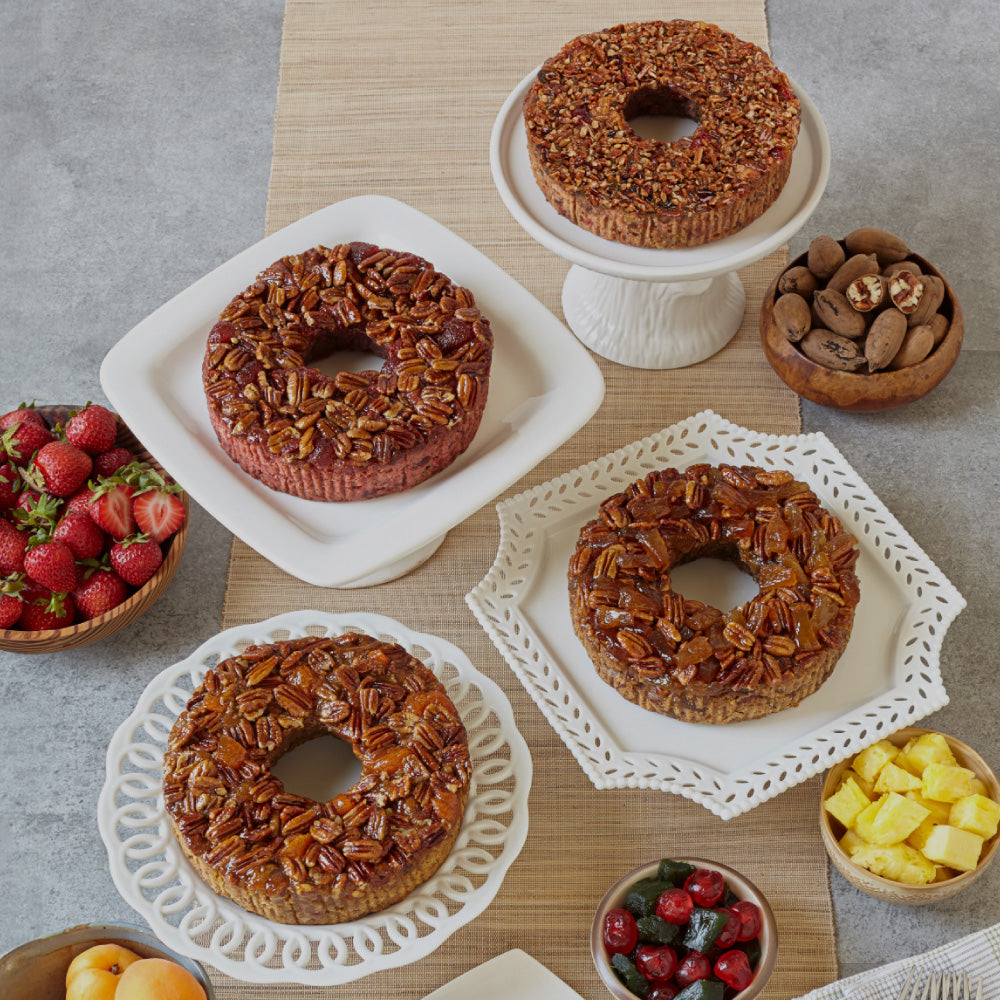

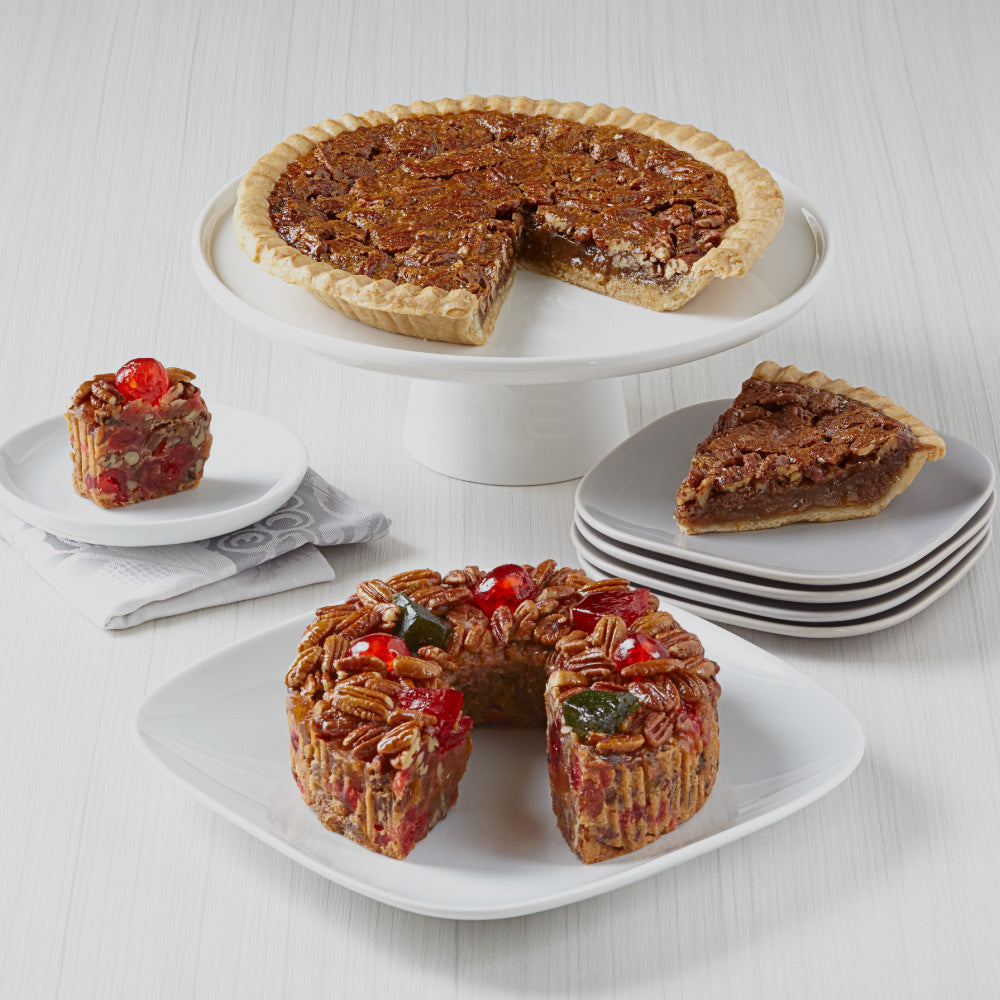
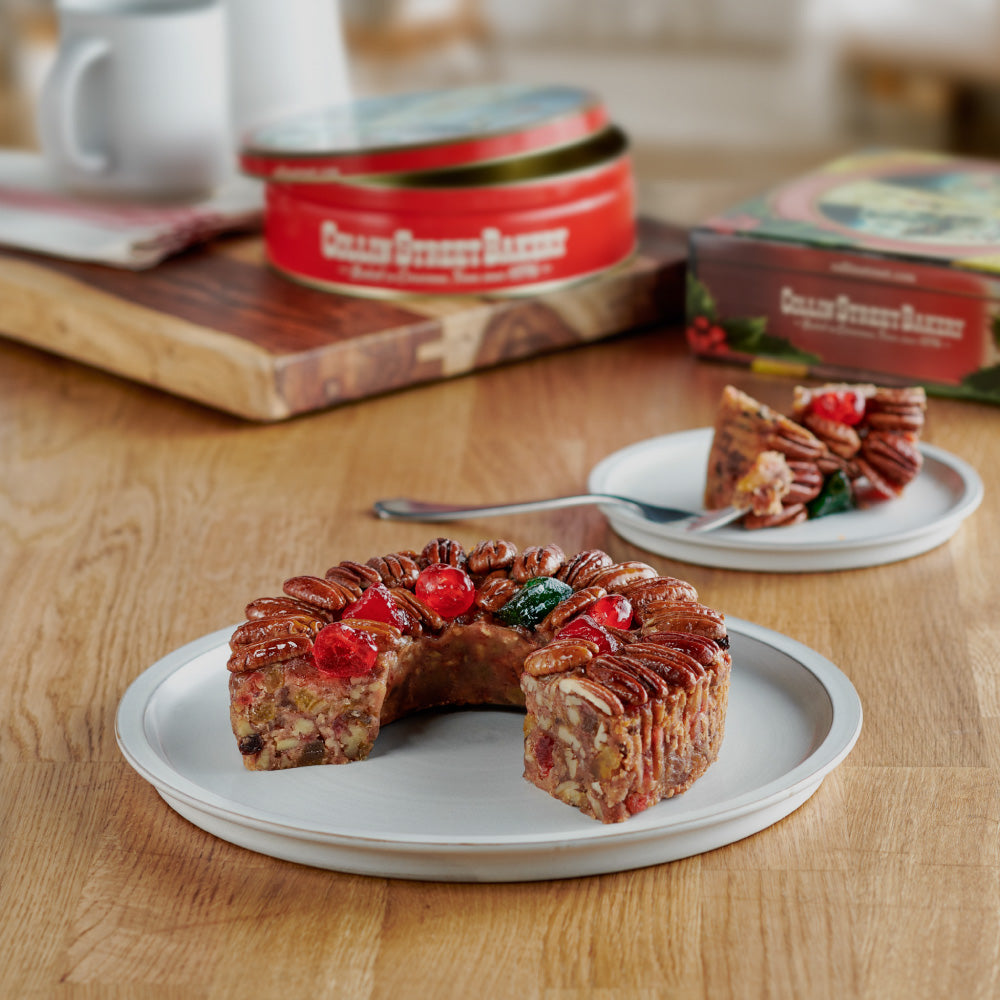
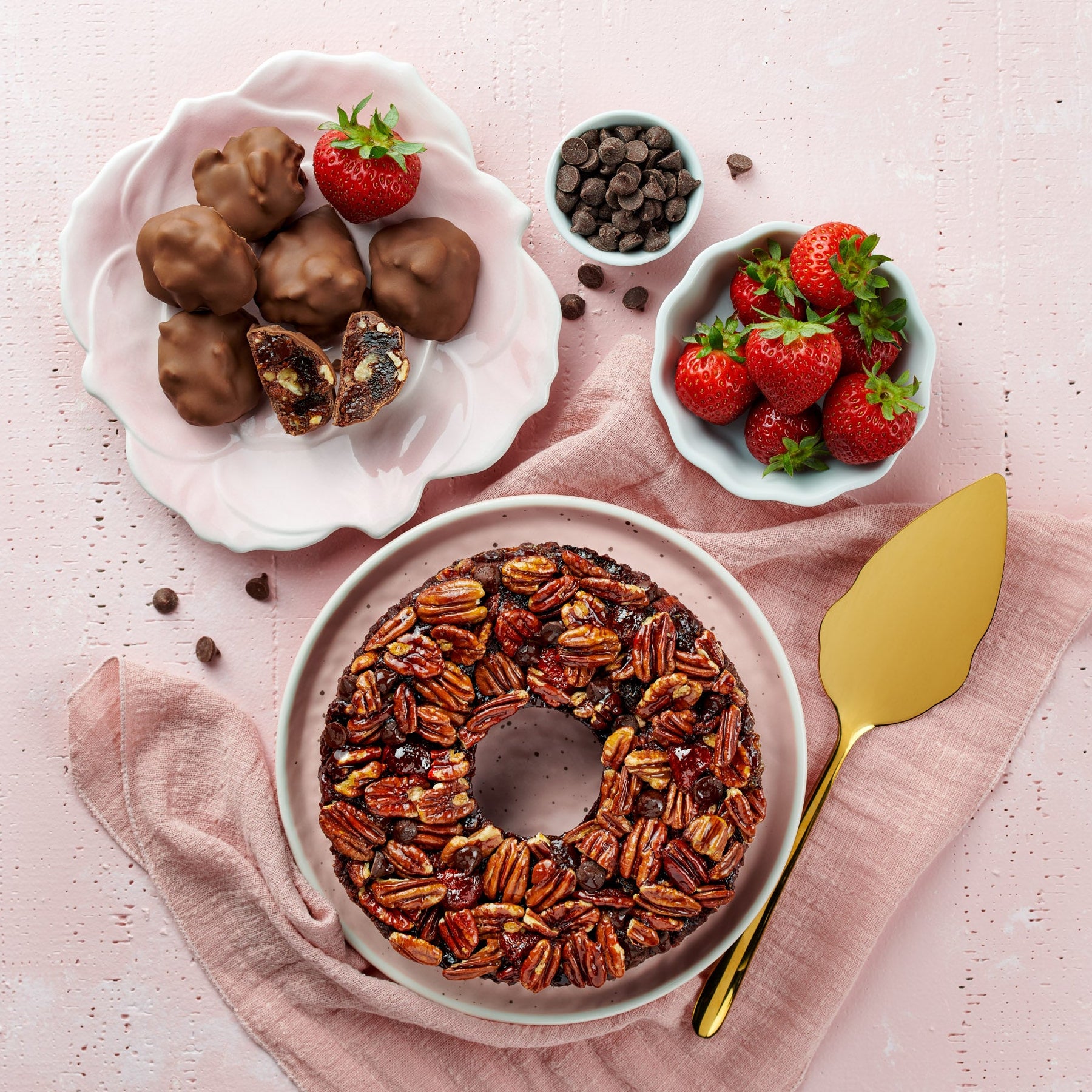
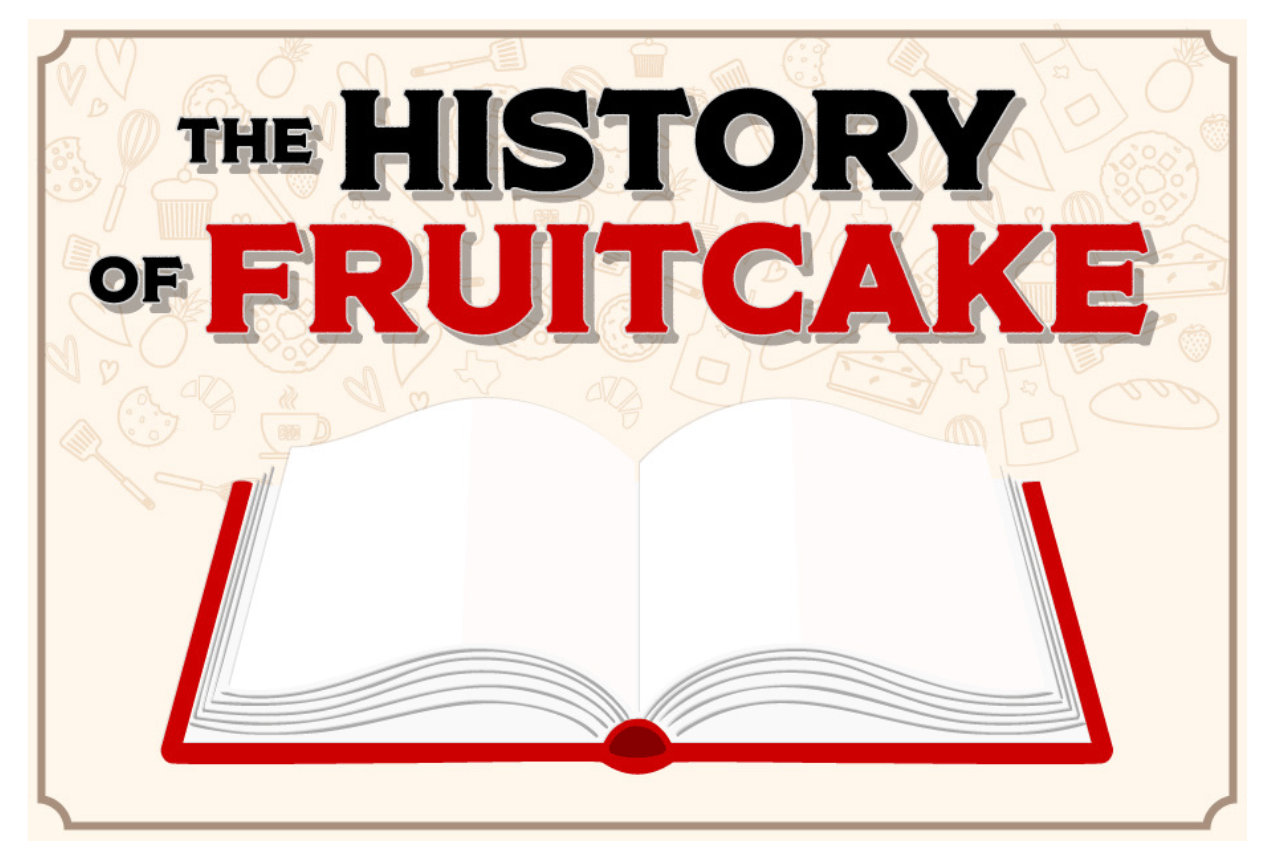











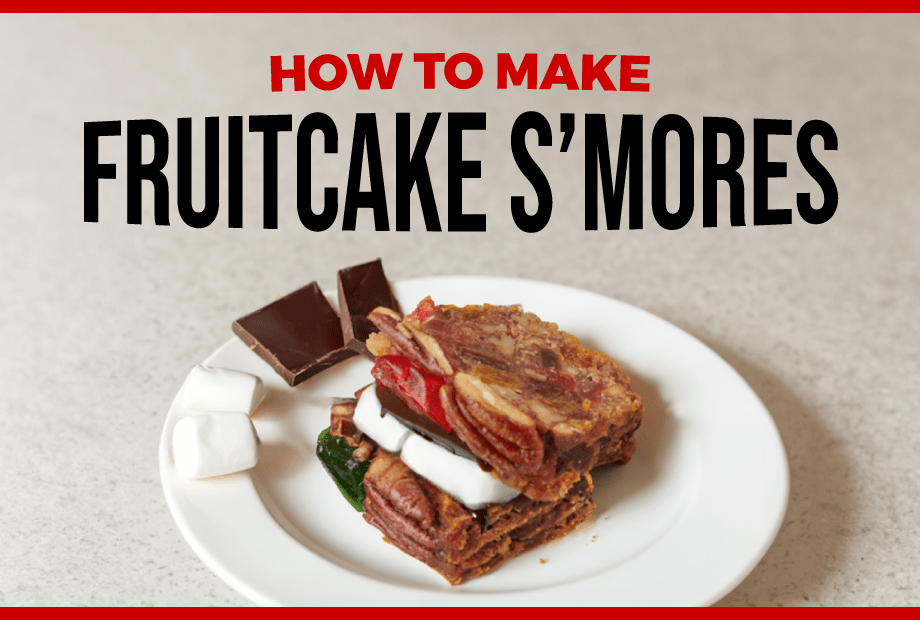
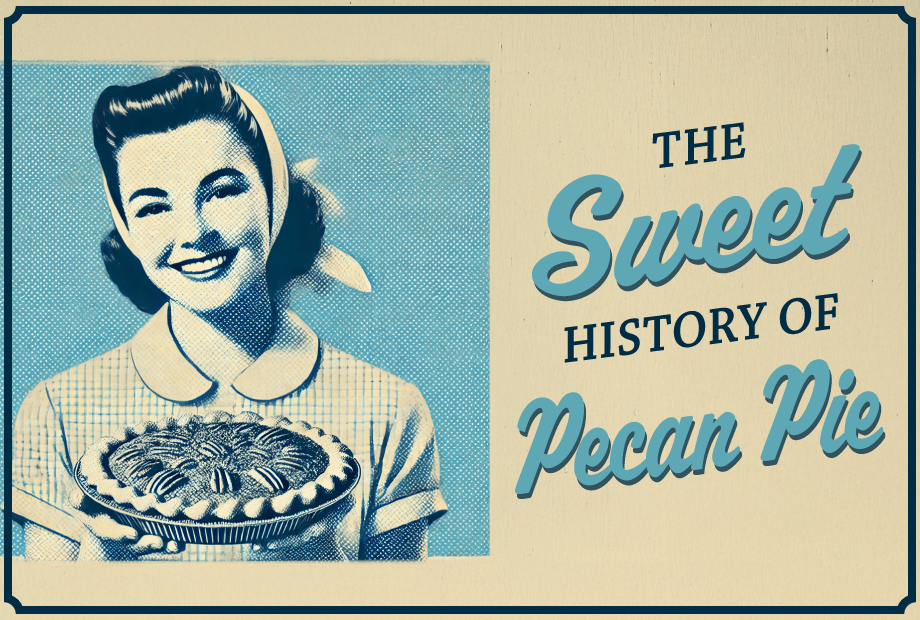
Leave a comment
This site is protected by hCaptcha and the hCaptcha Privacy Policy and Terms of Service apply.